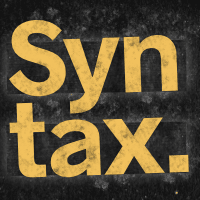Issue # 15 – Effective remote work

Issue # 15 – Effective remote work
<1/> Doing remote work easy
As we approach fluid week, it is important that we do not drop the ball, in the background of scenic views, and get together activities that are organised.
Granted that productivity might drop because people are in new environments and there are activities that will be going on during the day, it is paramount that one re-establish a routine that accounts for these changes.
A couple of things that one could take into account when planning are:
- Plan ahead, it is not a crime to over plan
- Find the right time that you will dedicate high priority work
- Try to always stay in the loop with your team throughout the day
- Maybe turn on notifications that are related to your team
- Reduce distractions
- Have fun
- Have a checklist
We also need to have fun while we are engaging in these activities, and make the best out of the whole experience.
<2/> The Weekly Dev
During development, an application can have a lot of moving parts, a classic example could be authentication, or in an e-commerce perspective, the whole cycle of ordering things, an order can go through, orderRecieved -> orderDispatched -> orderDelivered, that was an oversimplification, can be solved with XState, which Amplify uses for their authenticator component. The learning curve might be a bit daunting but once you have figured it out, it becomes second nature.
Often when handling business logic, we are likely to find ourselves literring the code base with a lot of if statements, which does not look good long term. With xstate you can store a majority of your business logic in state machines.
XState is a library for creating, interpreting, and executing finite state machines and statecharts, as well as managing invocations of those machines as actors.
XState makes you think hard about the business logic of your application. You need to understand how these transitions match up with the business logic. The beauty with XState is that you can create machines for frontend too. We normally handle UI transition, with booleans like isLoading or hasError. It is easy to have this become repetitive as the application grows, you can define all these transitions in a machine and have cleaner code. One great tool that you could use with XState is their visualizer which could help you visualize machine transitions.
Here are some sample starter projects for reference:



<3/> Deeper Dives



<4/> Inside The Console


Sending messages is not only for your users, but to help you track your resources growth as you scale. With mobile and desktop applications you can use AWS SNS to send push notifications.
AWS SNS is a service to send messages across applications and users. A common usecase is subscribing for when servers are down, or when a new users signs up. Amazon SNS achieves sending SMS or email to an Amazon Simple Queue Service.
Check-out the list of features and pricing for AWS SNS.
<5/>Geeking It Up
Nitric
Nitric is a framework for rapid Cloud and Serverless application development.
It offers portable building blocks for building on AWS, Microsoft Azure or Google Cloud. Nitric is opinionated to help you move super fast, but flexible and composable for when things need to get custom.
Soketi
Soketi is your simple, fast, and resilient open-source WebSockets server
hilla
Hilla integrates a Spring Boot Java back end with a reactive TypeScript front end. It helps you build apps faster with type-safe server communication, included UI components, and integrated tooling.
aws educate
AWS Educate is now open to any individual, regardless of where they are in their education, technical experience, or career journey. AWS Educate offers hundreds of hours of self-paced training and resources for new-to-cloud learners
As Seen On Over 400 News Platforms













